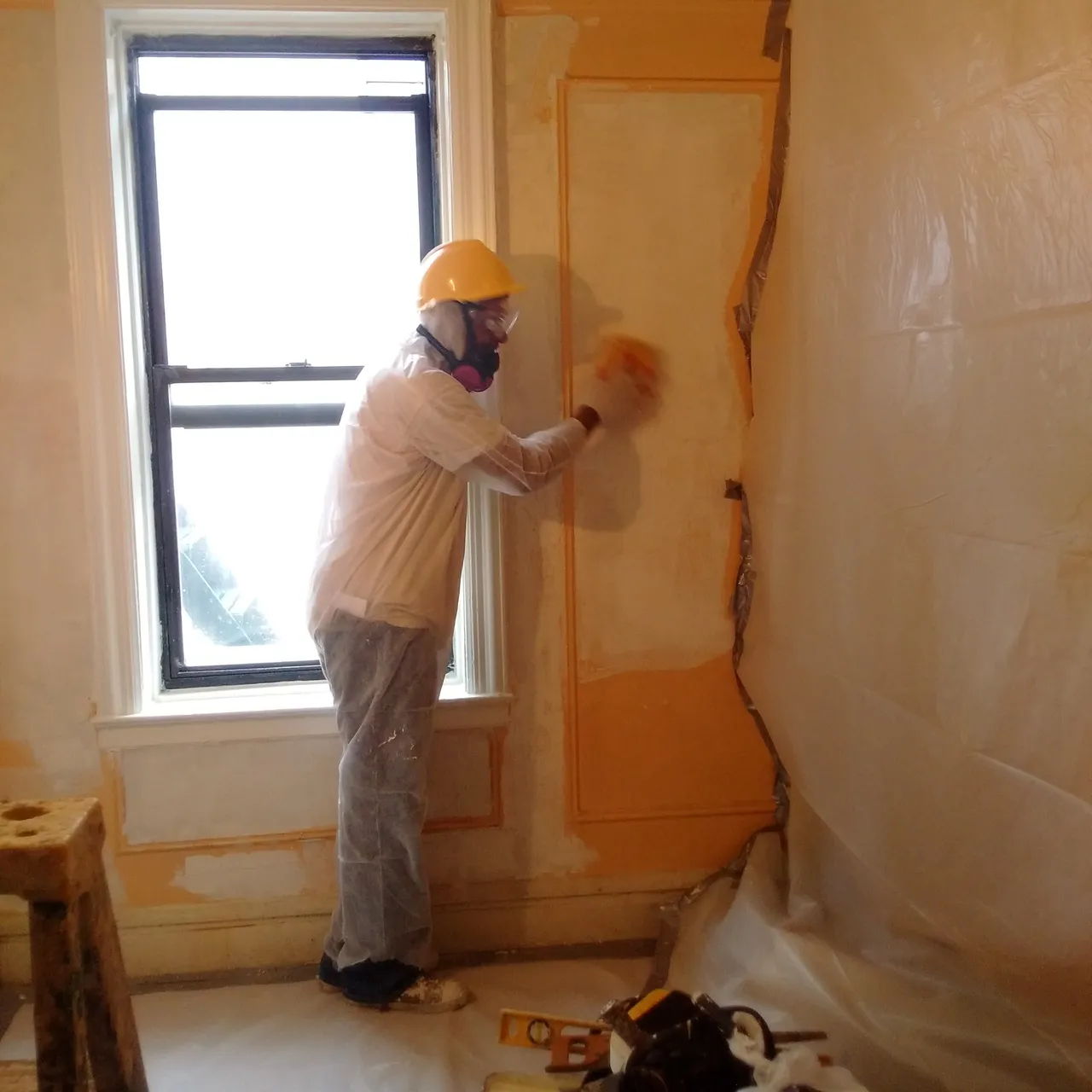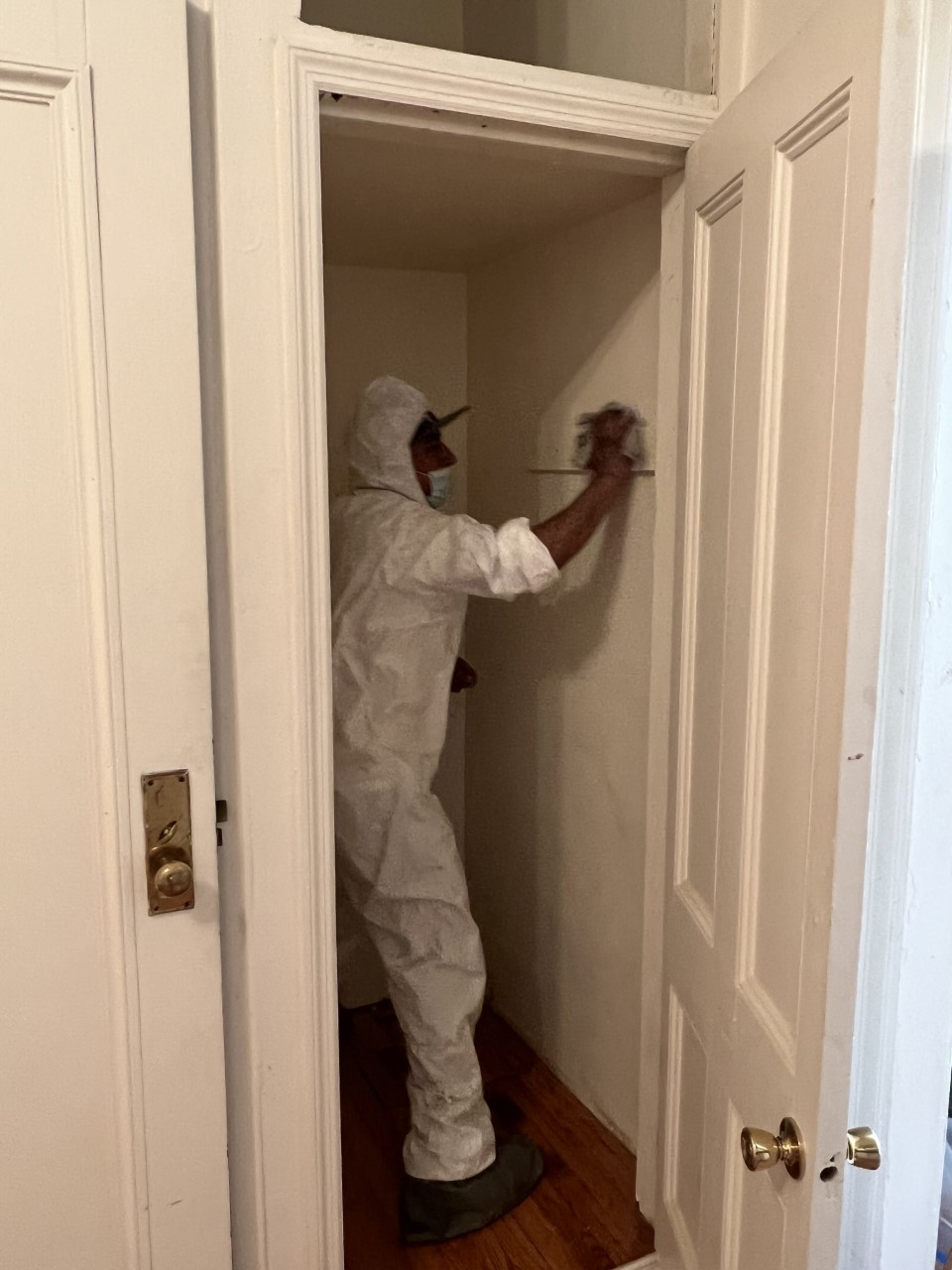NYC Lead Paint Removal Company-- Making Sure Safe and Legal Compliance
Wiki Article
Necessary Devices and Strategies for Effective Lead Offense Cleaning
Addressing lead infractions effectively requires a detailed method that blends the right devices with calculated methods. Simultaneously, the use of specialized cleanup devices, such as HEPA vacuum cleaners and lead-specific cleansing agents, is imperative for complete pollutant removal. Efficient control approaches, consisting of plastic sheet and adverse air pressure systems, are important to avoid the spread of harmful products.Personal Safety Tools
Individual safety tools (PPE) is a critical element in the reliable monitoring of lead contamination cleanup. PPE functions as a crucial obstacle, securing employees from the hazardous impacts of lead exposure, which can result in serious health consequences. The important PPE for lead cleaning includes respirators, protective apparel, gloves, and eye defense. Each kind of equipment is specifically created to minimize different risks related to lead bits and dust.Respirators, specifically those outfitted with HEPA filters, are vital for filtering air-borne lead fragments, avoiding inhalation. Correct fit and seal checks are crucial to ensure their effectiveness. Protective apparel, consisting of coveralls and disposable suits, protects against lead dirt from adhering to workers' garments, lowering the risk of additional contamination. Gloves, generally made of nitrile or latex, secure the skin from direct contact with lead, while safety and security goggles or full-face guards secure the eyes from dust and particles.
Furthermore, extensive training on the right use and upkeep of PPE is essential. Workers have to be enlightened on putting on and doffing procedures to stay clear of contamination. Normal inspections and substitutes of PPE parts are necessary to preserve their protective capacities, making sure a safe and compliant cleanup operation.
Specialized Clean-up Equipment

An additional essential device is the wet/dry vacuum, which can successfully tidy up both dust and liquid pollutants. These vacuums typically come with HEPA filters to offer an additional layer of safety. Damp cleans or tack cloths are also crucial for surface cleansing; they are particularly created to catch and hold lead particles, minimizing the danger of spreading out contamination.
For more stubborn deposits, specialized lead-removal cleansing agents are needed. These agents are created to damage down lead bits, making them simpler to eliminate. Scrub brushes with tough bristles can assist in this procedure, specifically on rough surfaces where lead dust often tends to adhere extra strongly.
In addition, encapsulants are used to seal lead-contaminated surfaces, visit the site protecting against the release of lead dust. These specialized paints and coatings are created to stick to various substrates, supplying a lasting option for lead control.
Reliable Control Techniques
Efficient containment methods are crucial in mitigating the spread of lead contamination during cleaning activities. Implementing robust control methods ensures that lead bits do not move to unaffected areas, thereby safeguarding both employees and the atmosphere. One key technique is using plastic sheeting to seal off infected zones. Heavy-duty polyethylene barriers can be installed from flooring to ceiling to create a regulated workplace, significantly reducing the threat of airborne lead dust dispersal.
To improve control, encapsulants can be put on surface areas that are not being eliminated or disrupted. These specialized finishings bind lead dirt, lowering its availability for resuspension. Additionally, all employees need to wear appropriate Individual Safety Equipment (PPE), consisting of respirators and non reusable suits, to avoid contamination spread.
Safe Disposal Practices
Guaranteeing secure disposal techniques is an important part in the management of lead contamination cleanup. Proper disposal mitigates the threat of lead re-entering the environment and threatening public wellness. The very first action is to recognize and set apart lead-contaminated waste from other products. Secure control making use of durable, watertight containers is vital to protect against spillage throughout transport.Transporting lead waste calls for adherence to rigorous standards. Making use of certified Full Report unsafe waste providers makes certain that the materials are managed sensibly. Documentation, consisting of shows up detailing the type and amount of waste, should go along with deliveries to track the waste from the website of origin to its last disposal location.
Designated harmful waste disposal centers are furnished to manage lead-contaminated materials securely. These facilities commonly utilize advanced approaches such as stabilization, solidification, or chemical therapy to counteract the lead prior to disposal. Landfilling in specialized, lined areas that avoid leachate from contaminating groundwater is an usual technique for final disposal.
Normal training for employees entailed in lead waste disposal is crucial to maintain security criteria and prevent unintentional exposure. By adhering to these techniques, companies can substantially reduce the ecological and health and wellness influences related to lead contamination.
Regulatory Compliance Tips

Complying with regulative conformity is vital in the successful execution of lead contamination cleaning. Recognizing and following government, state, and local guidelines guarantees not only the safety and health and wellness of people yet likewise the legal and economic wellness of the cleaning company. The Epa (EPA) sets strict standards, such as the Lead Improvement, Repair Service, and Paint (RRP) Regulation, which mandates correct accreditation and training for contractors managing lead-based tasks.
Conformity begins with basics a comprehensive analysis of suitable regulations and regulations. Organizations must stay upgraded on any legislative changes, which can be facilitated with routine training sessions and subscribing to sector updates. Documents is another crucial conformity aspect; preserving detailed documents of all activities, including inspection records, employee training logs, and disposal manifests, is crucial.
Additionally, involving with accredited lead inspectors or run the risk of assessors makes certain that lead dangers are appropriately determined and reduced. Companies have to impose making use of Individual Protective Equipment (PPE) and ensure that safety protocols are strictly complied with. Lastly, transparent interaction with stakeholders, consisting of staff members, customers, and governing bodies, will certainly foster a society of compliance and accountability, eventually adding to a much safer and more efficient lead cleanup procedure.
Conclusion
Effective lead violation clean-up demands the assimilation of specialized tools and calculated approaches to make sure safety and security and effectiveness. Personal protective tools (PPE) safeguards employees from exposure, while risk-free disposal practices and strict adherence to regulative compliance are vital for sensibly handling hazardous waste.Report this wiki page